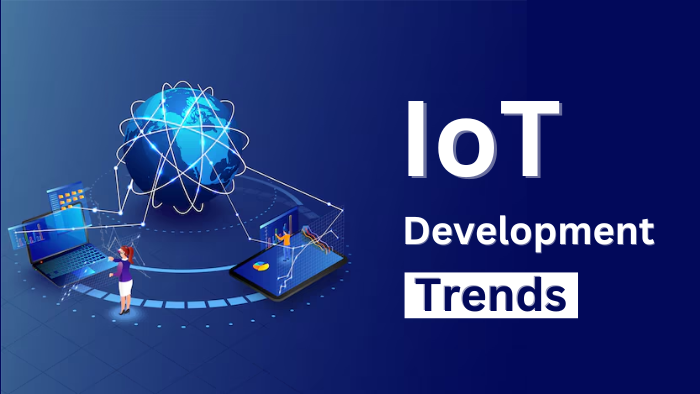AI is the primary technology that facilitates the propagation of the Internet of Things. While it tailored experiences for humans with accuracy and speed, IoT gathered and shared data.
Major companies in the world – PWC, KPMG, BCG (and likewise) rank AI over IoT in terms of investment prioritization for emerging technologies. The rapidly growing trend of integrating sustainable practices into the Internet of Things technology, alongside the exciting potential of advancements like AI-powered IoT, next-generation connectivity (including 6G), and immersive technologies like Augmented Reality and Virtual Reality, making way for innovation across various industries.
Graduating Towards Future
The technological advancement started with AI but gradually several technologies aligned to app creation’s progress. It’s important to consider that AI development heavily relied on advancements in other areas like computing power and algorithms, making it a collaborative evolution rather than a singular starting point.
Everyone wanted to adopt AI into their businesses when it emerged. In learning and using it, many devices had to be connected. Phones became mini-computers, and apps were installed, that operated devices like alarm clocks, washing machines, water heaters, and air conditioners (without using a remote) or without being physically present there.
It seems simple, but a lot goes behind the scenes. It looks like waking up to your smart alarm clock, which automatically adjusts based on the weather data it receives, then using your smart coffee maker to brew a cup while checking your smart thermostat to adjust the room temperature, all controlled through your phone before heading out the door with a smart fitness tracker monitoring your steps throughout the day; essentially, everyday devices connected to the internet that can be monitored and controlled remotely.
Very relatable in modern, high-end organizations, innovations like hands-free computer operations and screen readers for the visually impaired could reshape how individuals with disabilities contribute to their work and drive business success in the coming year.
AI makes the workplace accessible by customizing work environments by providing voice commands for different types of disabilities, through live captioning, transcription services, and noise cancellation.
Positioning Connected Devices
Companies are prioritizing environmental responsibility – energy-efficient devices, smart grids for optimized energy consumption, and waste management systems that leverage IoT sensors to monitor and reduce waste.
IoT is often not noticed in the wake of AI, because many common people do not even know the name. It all brings cost in control, as you do not have to look sideways or do not require depending upon a different technology to accomplish the same work. Also, if everything goes well, maintenance is predictable, responses are automatic, and efficiency is improved.
We get the idea that machine-to-machine solutions are thriving and the future is ripe with its features, benefits, and use cases. 6G networks, augmented reality, and virtual reality are also being incorporated into it to make interactive and immersive apps.
Is It Only Made Up Of Sensors?
Sensors are an important part of IoT, but it has more things to consider. This technology is embedded within smart washing machines, smart TVs, vacuum cleaners, smart toothbrushes, smart lights, pet finders, and smart baby monitors. It also makes homes – offices – hospitality – retail – medicine – cities – agriculture – energy management – logistics and fleet management smart.
When You Need To Implement IoT Within a Business
If you have an idea about what you wish to create, find out what things – technologies – tools will be required. Research and study will optimize operations, improve customer experience, or reduce costs.
- Pick the right sensors and devices based on your app requirements considering power consumption, accuracy of data, and environmental conditions. But all these small devices should integrate well and must be compatible for the system and network to function correctly.
- Select a network protocol that suffices the need of the application – Wi-Fi, Bluetooth, cellular, or LoRaWAN.
- Consider network coverage and potential bandwidth limitations.
- Select a web of things platform to collect, store, and analyze data from connected devices for enabling data visualization, real-time monitoring, and advanced analytics.
- Pitch in some security, meaningful insights, and algorithms to check future trends.
- IoT devices need to connect a large number of online devices. If the internet fails, the network breaks. Integrating IoT into old business systems is a challenge because they might not be scalable, or might not have the bandwidth to include new devices.
- Updating software frequently (regularly) will help in fixing patches (loopholes), ensuring that the application remains compatible with legacy applications and preventing workflow disruptions.
- Top mobile app development companies who follow data privacy norms will be able to make better data collection and retention decisions, leading to more accurate and relevant analytical results to avoid litigation in case of data privacy law breaches.
Anecdotes IoT
You will find similar examples all over the internet while searching for where IoT is being used:
Smart Cities, Industrial Automation, Retail, Manufacturing, Retail, Logistics, Healthcare, Smart Homes; This technology will be leveraging edge computing, 6G connectivity (5G is already done)
It has adopted newer ways to secure data, probably via Blockchain as multi-factor authentication and advanced encryption have been tried and tested many times already. Scalability is the need of modern applications, so storing data on cloud servers is a priority.
Implementing It For a Greater Cause
Without any second thought of app development for all platforms is essential because it is not possible to leave any single platform, owing to the users coming from different backgrounds.
Voice assistants are used in a variety of devices, including smart speakers, home automation systems, wearables, and connected cars.
But besides these traditional ones, something that is not very common is the use of Neuromorphic Computing wherein IoT apps will begin to mimic the human brain’s neural architecture for ultra-efficient processing in real-time IoT environments (for AI-driven applications).
IoT app development trends will integrate quantum computing, and digital twin trends for solving complex optimization problems – improving logistics in smart cities, logistics, or optimizing energy consumption across large networks of devices. IoT App Development solutions will focus on environmental sustainability. As IoT continues to expand, these trends are redefining the future path for emerging IoT app development companies to thrive, sustain, and flourish.




